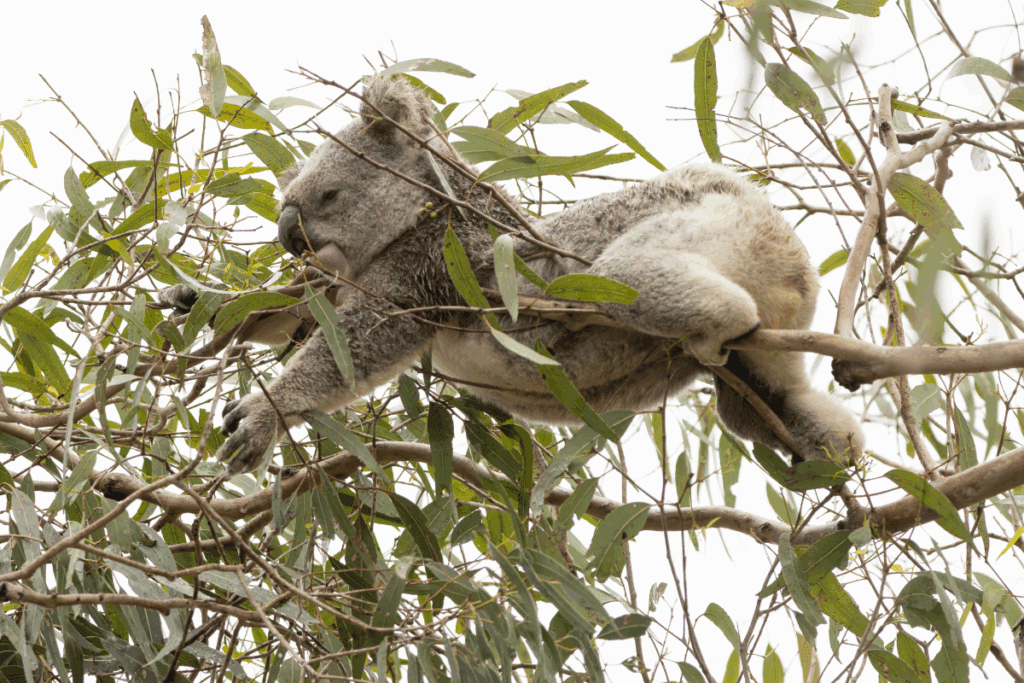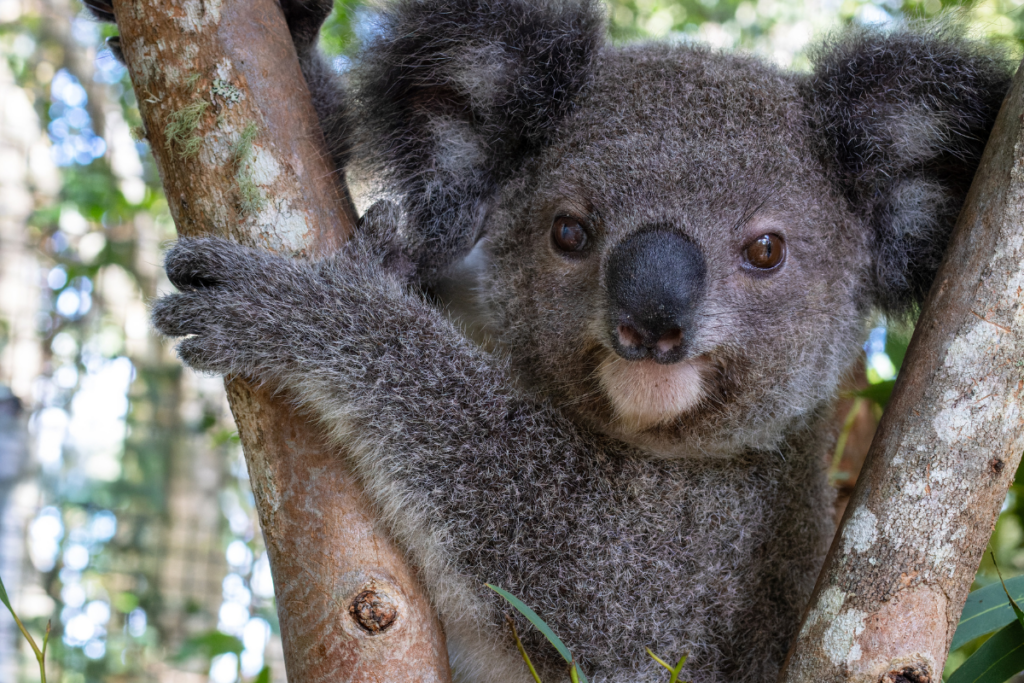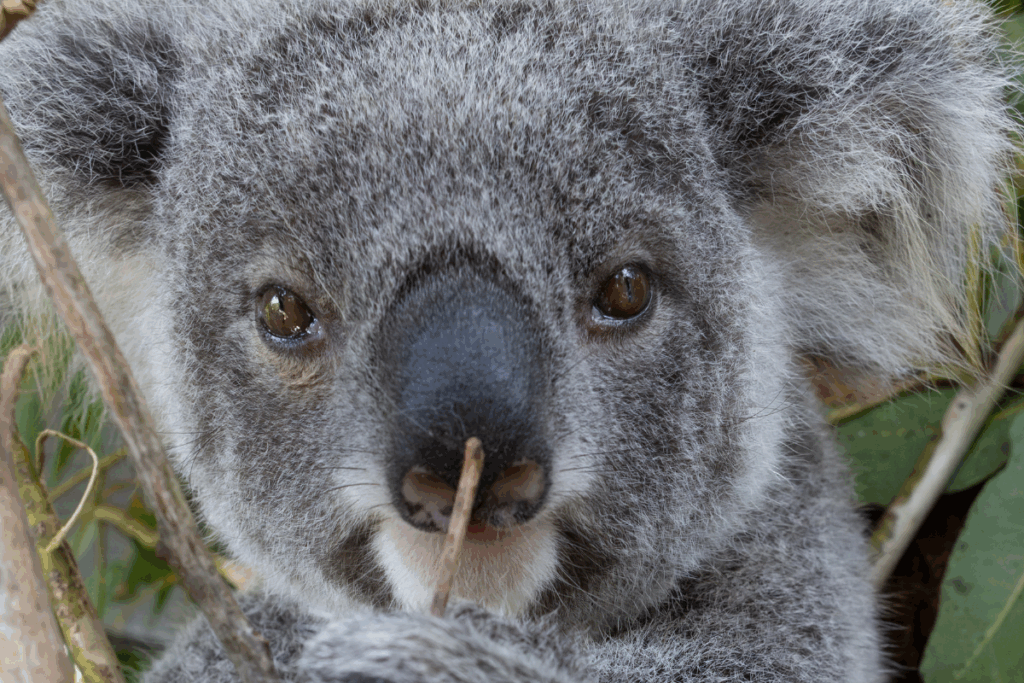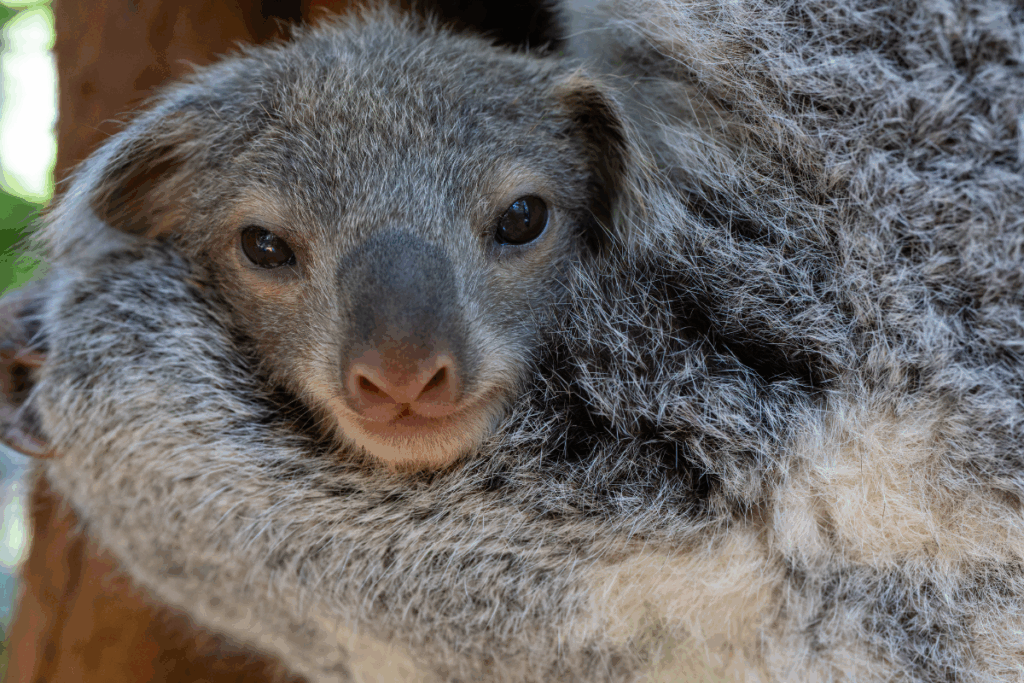Next month is National Threatened Species Day (September 7th) as well as Save the Koala Month, culminating in Save the Koala Day (Friday 26th September) and we think it is a great opportunity to marvel at the uniquely evolved species that is the much loved koala – a species facing ecological fragility due to habitat loss and disease.
Koalas (Phascolarctos cinereus) are one of Australia’s most distinctive marsupials, known for their fluffy ears, big noses, sleepy disposition, tree-dwelling lifestyle and diet of eucalyptus – they have a surprisingly complex biology.
Our fluffy friends rely on a small number of eucalyptus species for both food and water, and they possess unique adaptations such as an enlarged cecum to digest toxic leaves and strong limbs for climbing. Despite their evolutionary success, their specialisation comes at a cost. Behind the cuddly image lies a harsh reality: koalas are increasingly vulnerable to the impacts of human activity. Land clearing, climate variability, disease (like Chlamydia) and habitat fragmentation all pose serious risks to their long-term survival. Understanding their biology and ecological role is critical to informing effective conservation strategies.
Whether it’s their biology, behaviour, or the challenges they face today, these ten insights reveal there’s much more to koalas than meets the eye.
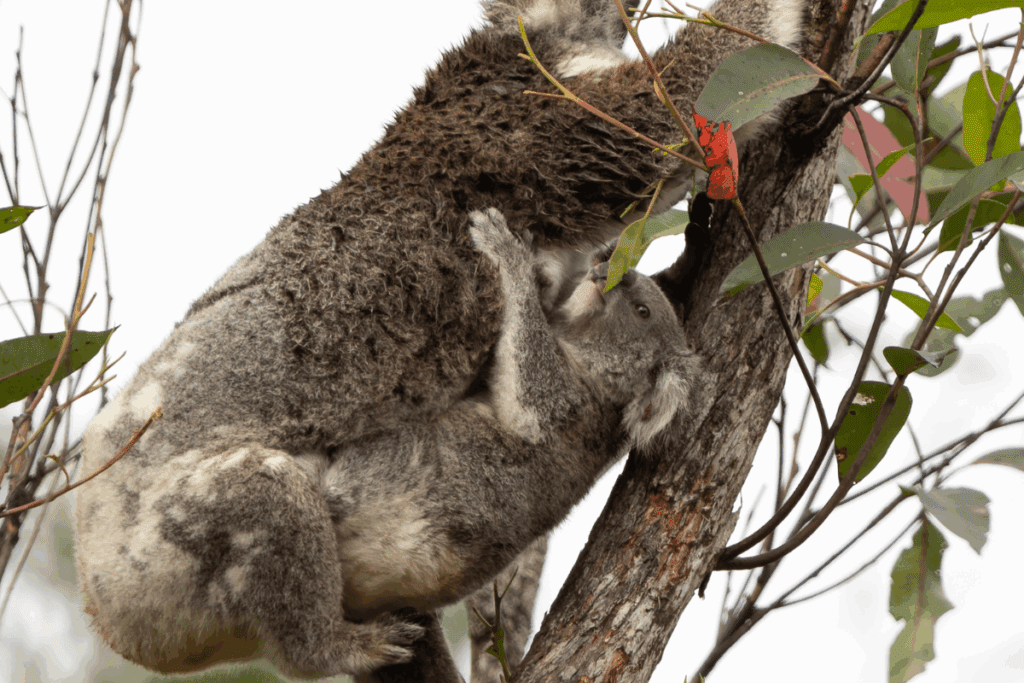
Did you know that male koalas are much larger than female koalas?
Male koalas are generally larger than females, sometimes weighing up to fifty per cent more – reaching 13 to 14 kg compared to the average 9 to 10 kg for females. In addition to their size, males typically have broader heads and more prominent noses. One of their most distinctive features is a dark, oval-shaped scent gland located on the chest, which they use to mark trees with a musky secretion – an important part of both territorial behavior and mate attraction. Females lack this gland and tend to have a smaller build overall.
Koalas are mostly nocturnal and crepuscular
Koalas conserve energy by sleeping or resting for eighteen to twenty hours a day – a behaviour closely tied to their low-energy diet of eucalyptus leaves, which are high in fibrous material and toxins but low in calories and nutrients. To make the most of their limited energy intake, koalas have a very slow metabolic rate, one of the lowest among mammals. They are primarily crepuscular and nocturnal, meaning they are most active during the cooler hours of dawn, dusk, and nighttime. During these periods, they move between trees to feed, using their strong limbs and sharp claws to climb efficiently. This quiet, low-activity lifestyle is not laziness – it’s a highly evolved strategy for survival on a difficult and chemically defensive food source.
Koalas have a specialised diet
Koalas have an extremely specialised diet, feeding almost exclusively on the leaves of certain eucalyptus species. These leaves are tough, fibrous, and contain natural toxins like tannins and cyanogenic glycosides, which would be harmful to most animals. Additionally, eucalyptus leaves are low in protein and energy, making them a poor-quality food source nutritionally.
To cope with this challenging diet, koalas have evolved a highly adapted digestive system, featuring a large, well-developed caecum – a pouch-like organ that houses symbiotic bacteria which ferment and break down the fibrous leaves. Because digestion is slow and energy-intensive, koalas spend up to twenty hours a day resting or sleeping to conserve energy, an essential survival strategy rather than laziness. Before a joey can safely eat eucalyptus leaves, the mother provides a special substance called pap – a soft, partially digested feces rich in microbes – which helps the young koala develop the ability to digest toxic leaves.
Another fascinating fact about koalas is their selective taste for eucalyptus. Out of more than 600 species, koalas eat only about twenty. This is thanks to their extra bitter taste receptors (TAS2R), which allow them to detect and avoid leaves with higher toxin levels. These specialised taste buds give koalas a genetic advantage, helping them choose safer, more nutritious foliage – an important key to their survival. Read more about our koala food tree plantations.
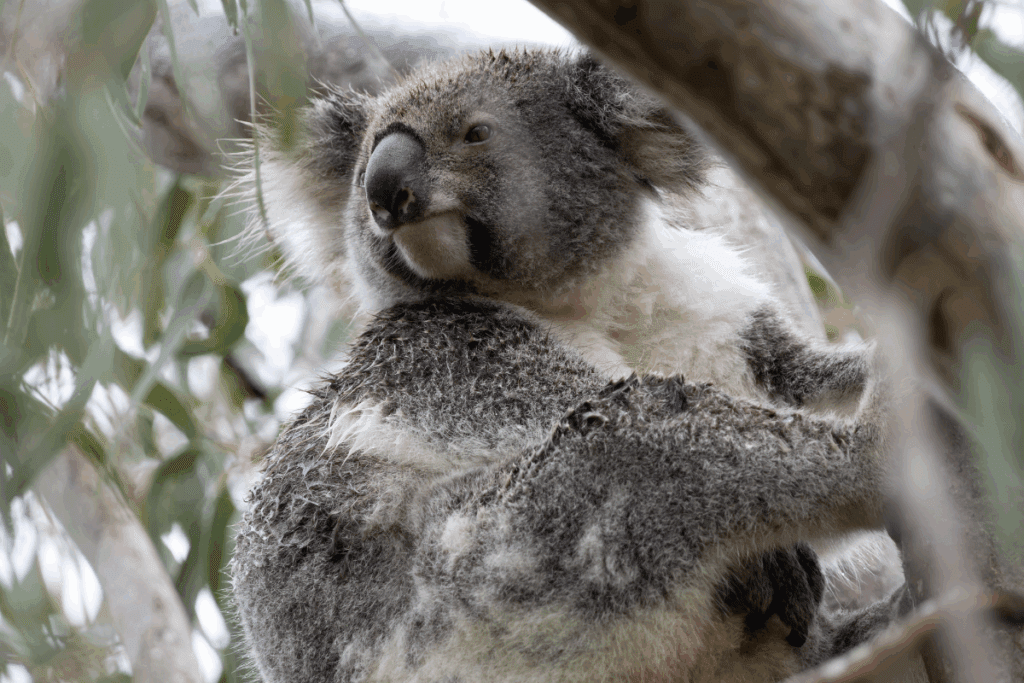
Koala joeys
A newborn koala, known as a joey, is incredibly tiny – about the size of a peanut or jellybean – and is born blind, hairless, and completely undeveloped, except for its forelimbs and sense of direction. Yes their hind limbs and ears are barely developed and not yet functional! Despite its fragile state, the joey instinctively crawls from the birth canal into its mother’s pouch using only its front limbs, guided by smell and touch.
Once safely inside the pouch, the joey latches onto one of two teats, which swell slightly to hold it in place – the joey remains constantly attached for the first few months of life. The joey stays inside their mothers pouch for about six months, continuing to grow and develop in this protected environment. During this time, it begins to sprout fur, open its eyes, and prepare for life outside the pouch and mum also begins to produce pap.
After emerging from the pouch, the joey spends another few months riding on its mother’s back, nursing and gradually starting to nibble on leaves. Full independence usually comes around 12 months of age, though the mother-offspring bond may last longer depending on environmental conditions. You can see why orphaned joeys are so vulnerable and often don’t make it without their mums. Why not have a look at the lifecycle of a joey here.

Do koalas drink water?
The name “koala” comes from an Aboriginal word often interpreted to mean “no water,” which reflects the species’ remarkable ability to meet most of its hydration needs through eucalyptus leaves. These leaves contain enough moisture to sustain koalas under normal conditions, allowing them to rarely descend from the safety of the treetops.
However, recent observations have revealed that koalas do drink free water more often than previously thought – especially during extreme heat, drought, or after bushfires. They’ve even been seen licking rainwater or dew running down tree trunks, a behavior that appears to help them stay hydrated without leaving the trees. This discovery has prompted conservationists to consider installing water stations in trees rather than only at ground level, which may reduce the risk of predators or road accidents.
So while koalas are well adapted to a low-water lifestyle, climate stress is changing how often – and how urgently – they need to seek out extra hydration.
Koala fingerprints
Koalas are one of the few non-primate mammals known to have fingerprints that closely resemble those of humans – so much so that even under a microscope, it can be difficult to distinguish between the two. These fingerprints form intricate whorls and loops on the tips of their fingers, believed to aid in tactile sensitivity and grip, especially when foraging among leaves and branches.
In addition to their fingerprints, koalas possess a highly specialised hand structure for life in the trees. Each front paw has two opposable thumbs, arranged in a way that allows the koala to grasp branches securely and manipulate leaves with precision. These thumbs face inward while the three remaining fingers face outward, giving koalas an effective pincer-like grip. Their hind feet are also adapted for climbing, with a large, clawless opposable toe and a fused pair of digits (syndactyly) used for grooming.
Together, these adaptations make koalas exceptionally well-suited to their arboreal lifestyle, allowing them to navigate the upper canopy with ease – even though they spend most of their time resting.
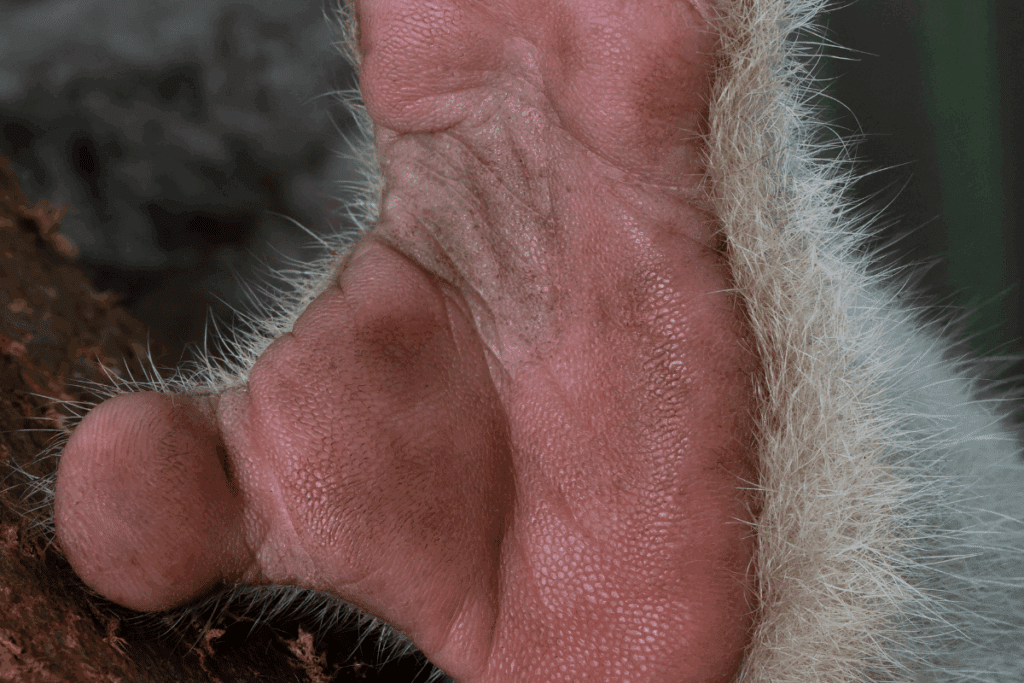
Marsupials not koala bears!
Despite often being called “koala bears,” koalas are actually marsupials, not bears. Unlike placental mammals such as bears, marsupials give birth to underdeveloped young that continue developing in a pouch. Koalas are more closely related to wombats, sharing a common ancestor with them from around 30 to 40 million years ago.
Koalas belong to the genus Phascolarctos, which was once more diverse and included several other species now extinct. One notable relative is Phascolarctos stirtoni, commonly known as the giant koala, which lived during the Pleistocene epoch and was significantly larger than today’s koalas. This lineage dates back roughly 24 million years and evolved alongside Australia’s changing environments. While environmental shifts and human activity likely contributed to the extinction of other species in this group, the modern koala remains the sole surviving member of its genus. This unique evolutionary history underscores the koala’s special place within Australia’s ancient wildlife. Check out more amazing facts about koalas.
Koala habitat is shrinking
The eucalyptus forests that koalas depend on are increasingly at risk due to factors like wildfires, agricultural development, mining activities, urban growth, and logging. Since European colonisation, over 80% of the koalas’ original habitat has been lost. While koalas can live in various environments, the presence of eucalyptus trees remains vital for their survival.
Most of the remaining koala habitats are fragmented into smaller, isolated patches. This fragmentation increases the likelihood of koalas encountering roads, leading to many being struck by vehicles. In 2024, over 67 koalas were killed on our roads in the Northern Rivers – each one a significant loss for this endangered species. Habitat fragmentation also makes it harder for koalas to travel between home ranges to find food, mates, and shelter. Read more about our habitat restoration efforts.
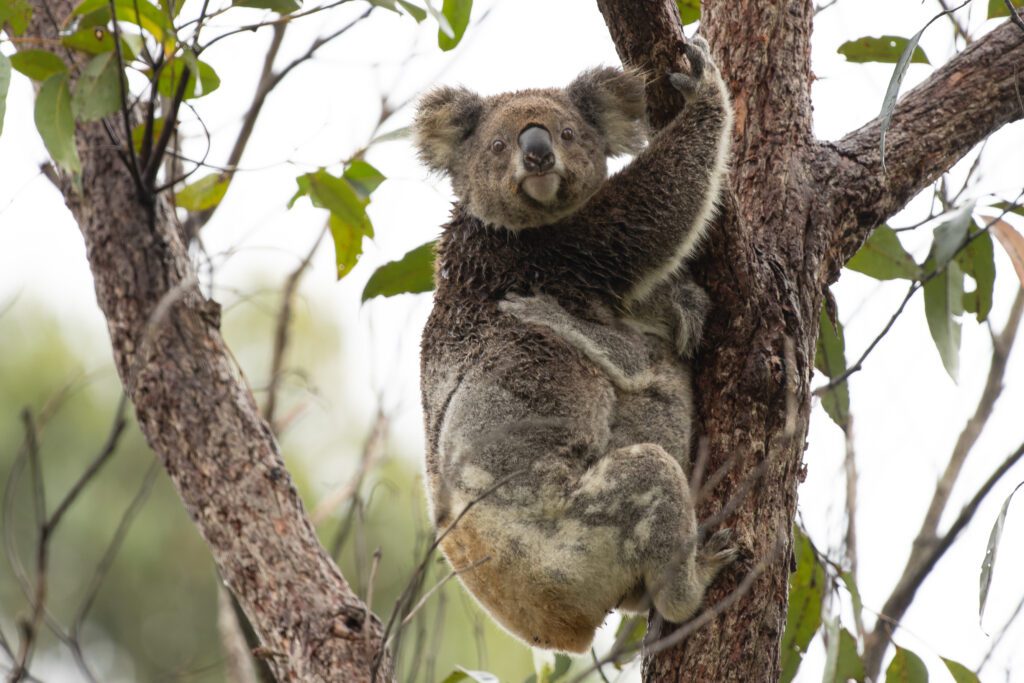
Chlamydia and koalas
Chlamydia, a sexually transmitted infection, poses a serious threat to koalas, especially in regions like here in the Northern Rivers where it is the number one cause of death. This disease spreads through direct contact between koalas – not only during mating but also via bodily fluids and faeces. Additionally, infected mothers can pass Chlamydia to their young during birth or nursing.
Infected koalas can suffer from severe symptoms such as blindness, infertility, urinary tract infections, and, in many cases, death. The prevalence of chlamydia varies widely across populations, affecting anywhere from 0% to nearly 90% of individuals depending on the region and environmental stressors like habitat fragmentation. Encouragingly, conservation efforts are underway, with vaccine development and targeted treatments showing promise in reducing the impact of this devastating disease. Read more about our research projects and participation in the Chlamydia vaccine trials.
Could koalas reach extinction?
At Friends of the Koala, we know the warning is urgent: without immediate government action, koalas in New South Wales could vanish from the wild by 2050. In 2022, the eastern Australian koala subspecies was officially listed as endangered, highlighting the growing risks they face.
Our organisation works tirelessly alongside other conservation groups and scientists to raise awareness and push for stronger protections. Like IFAW and WWF Australia, we emphasise that preserving and restoring critical eucalyptus habitats is just as vital as addressing diseases affecting koalas. Through community education, habitat restoration, and rescue efforts, we are committed to safeguarding these iconic marsupials for future generations. Read more about our partners in koala conservation.
As we approach National Threatened Species Day and Save the Koala Week, it’s a powerful reminder of how much is at stake. Koalas are not just cute faces – they are an ancient, specialised species deeply intertwined with Australia’s unique ecosystems. At Friends of the Koala, we are committed to protecting them through rescue, rehabilitation, habitat restoration, advocacy, and education. But we can’t do it alone. You can help by volunteering, donating, adopting a koala, or spreading awareness about the threats koalas face. Whether you are a local resident or a global supporter, your actions can make a difference. Together, we can ensure that koalas remain a living symbol of Australia’s natural heritage – not just a memory. We have so many ways that you can help us, please visit our Support Us page – perhaps you could dig deep for the month that’s in it and become a Friend of the Northern Rivers Koala Hospital? Please have a look at the various VIP membership tiers – it’s one of the best ways you can help us to save koalas this Save the Koala Month!!

